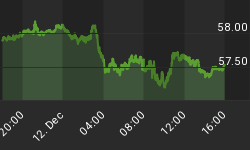Probably the top question that I have been asked in recent days is this: was the July 18, 2006 low the bottom for the four-year cycle?
My answer is that - although we know anything is possible in the markets - the probabilities are low for the July low being the four-year cycle bottom, simply based on the fact that this turn does not line up with the normal statistical evidence that we should expect to see with this cycle.
In terms of price in looking at the past history of this component (and for this I used as my starting point the November, 1903 low), the average decline from all four-year down phases has been 34.5% from peak to eventual trough, with the decline into the most recent four-year low actually being 50.5% - thus exceeding this normal statistical average.
The May top occurred 43 months from the prior low for this four-year cycle (October, 2002), which is a very bullishly right-translated cycle in peaking well past the halfway point. In the 26 four-year cycles that I have analyzed throughout the history of this particular component, only 8 of these (30.7%) have seen their peaks made on or past the 43 month mark. In isolating only these 8 instances, the average time decline was 6.62 months going into the following four-year trough. And, while 2 of the 8 actually did see their troughs made in only 2 months or less, the remaining 6 (75%) all took 5 months or longer before reaching their respective bottoms. In terms of price, the average decline with these bullishly-translated four-year cycles was 27.2%, with the minimum being 13.8% (going into the September, 1953 low) and the maximum being 50.2% (going into the March, 1938 bottom).
Going a bit further, of the 2 patterns that witnessed very short time bottoms (1-2 months or less), the declines into those lows were very sharp. That is, the decline from the February, 1926 top to the March, 1926 bottom lasted only 1 month, however the decline into that low was 17.1%. The second of these was the top in August, 1987, which culminated with the October, 1987 crash and which lasted only 2 months with time but declined a whopping 35.9% before troughing.
This also gives us a basic rule of thumb in regards to this cycle; that is, the shorter the decline (with time) into a four-year bottom, the greater the magnitude we should expect to see.
In contrast to all of the above, the recent decline from the May, 2006 high to the July, 2006 low was only 8% - which is too short statistically for me to qualify as a potential four-year bottom; as well, in terms of time the 2 month drop is also in the 'outside statistical range' that we should expect to see. In addition to the above, in my studies I have found that a valid cycle will tend to revert back to a moving average of a same/similar length about 85% of the time or better on the up or down phase of that particular cycle. For the four-year cycle I have found that price has a definitive tendency to revert back to the 40-month moving average, which is currently well below us at the 1172 level on the S&P 500 index. Thus, until this moving average minimum is hit - the downside risk is to that same average in the months ahead, regardless of whether the May top is taken out on the current swing upward.
With all of the above then said and noted, I put the probabilities for a four-year degree low in place as being slim. Should the May high be taken out to the upside on the current swing higher - which looks more than likely - then the upward phase of this four-year component is simply viewed as extending. In this case, it would be extending to or beyond the 47-month mark, which - as stretched as it may seem - has occurred 6 other times throughout the history of this particular cycle. Should the May high actually be taken out on the current four-year up phase, then I will go into a later article on the statistical implications of this going forward.
Lastly, I should add here that when the four-year cycle was this bullishly translated in the past, none have ever gone on to take out the prior four-year bottom on the following four-year down phase, which here infers that the S&P 500 has low-odds of taking out the 768.63 level at the next four-year bottom. In addition, of the 8 outlined occurrences of the aforementioned bullish translation (peaking on or past 43 months), 6 of these (75%) were followed by higher highs on the following four-year up phase. And, of the two that did not make it to new highs did see at least a good run at the prior four-year top, which basically infers that on the next four-year up cycle we are either going to take out the current four-year top, or shall at least make a strong re-test of that figure.
















